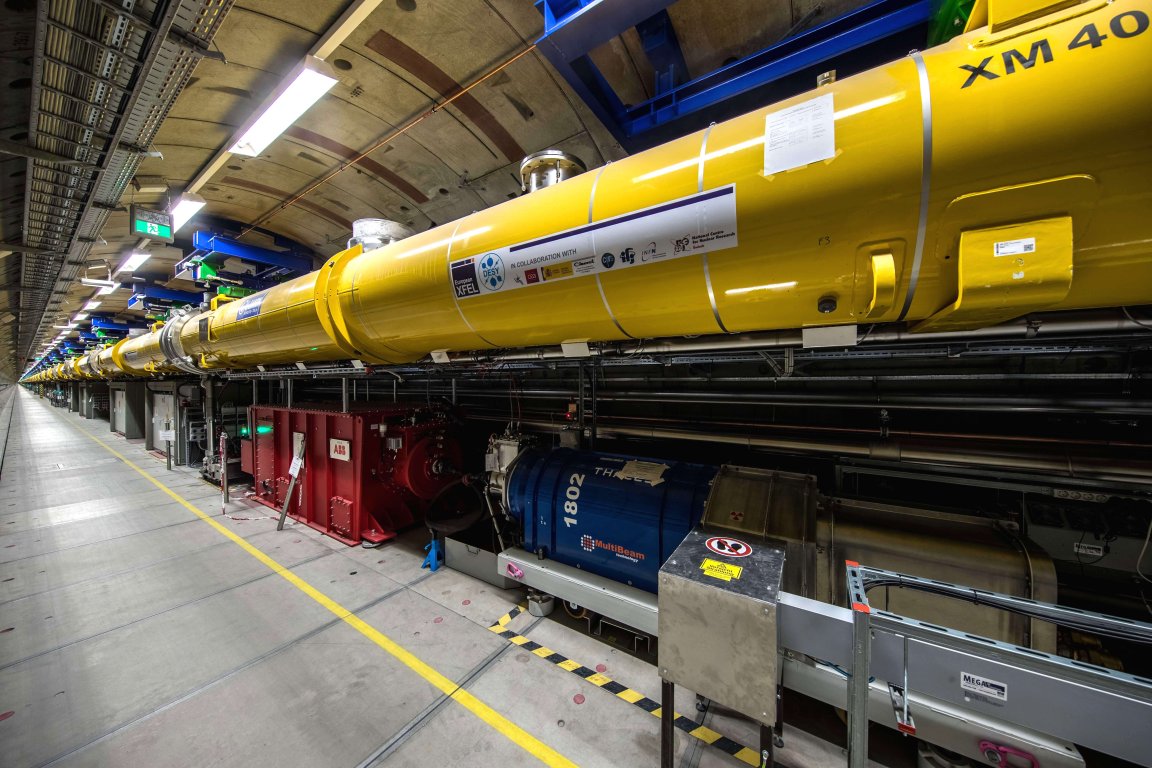
One Major Laser
Lasers are useful for far more than weaponizing a shark or delivering a psychedelic light show. The light-amplifying devices have been used to do everything from study climate change to cure cancer. Next on the agenda? Helping scientists reach the next breakthrough in atomic research.
Scientists at the Deutsches Elektronen-Synchrotron (DESY) research center in Germany are hard at work getting the world’s largest X-ray laser, the European XFEL, ready for use. Today, the scientists announced they’ve reached a milestone in its creation by successfully firing electrons through a particle accelerator 2.1 kilometers (1.3 miles) long.

This was one of the last milestones in the European XFEL’s creation, and it remains on track for completion later this year. Once completed, the European XFEL will be able to produce as many as 27,000 X-ray laser flashes in a single second. Because these flashes will be so quick and intense, they’ll allow researchers to generate never-before-seen images of structures and processes on the atomic level.
Tiny Structures, Big Implications
“The first experiments are within reach, and I am quite excited about the discoveries ahead of us,” said Helmut Dosch, Chairman of the DESY Board of Directors, in the DESY press release.
Those discoveries are expected to cover a wide range of subjects. The XFEL will be used to study viruses at an atomic scale in the hope that this increased detail will lead to better medical treatments. The device will also be used to gain further insight into the molecular composition of cells, which could help with everything from protecting the environment to healthcare, and the structures of nanomaterials, which could lead to better technologies.
More than anything else, the European XFEL will allow us to see a world that was previously hidden. As we enhance our understanding of this atomic world, we increase our ability to make it work for us in previously unimaginable ways.